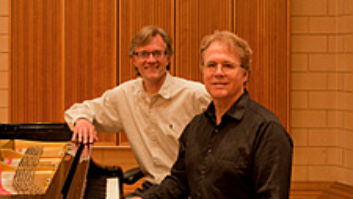It strikes me as a wee bit odd that last week in this space I was talking about commercial studios with real consoles and vintage mics and hardware; and this week, I’m going to talk about virtual gear. But hey, that’s the recording world in 2018.
Although you won’t get 100-percent agreement, many engineers, producers and recording musicians have come around to using software emulations of hardware signal processors. The resistance that was once there seems to have dissipated, due in large part to increases in the quality of virtual gear.
It’s totally normal now to read or watch an interview with an iconic engineer or producer, and he or she will talk about using plug-in versions of 1176s and LA-2As and Fairchilds without even bringing up the subject of relative quality compared to the original hardware. I’m sure that some of those folks still feel that the plug-ins don’t sound quite like the originals, but they realize that the practical advantages of working in the box—especially recall—overshadow minor quality differences.
Read more Mix Blog Studio: Survival Strategy—Move to the Suburbs.
I’m not saying that hardware processors are dead, but merely that software emulations—not to mention non-emulative plug-in processors—are now well-established in prime time.
Meanwhile, the last few years have seen the relatively quiet debut of another type of hardware emulation: the virtual microphone. There are now several systems available, including Slate Virtual Microphone System, Townsend Labs Sphere L2, and Antelope Audio Edge and Verge microphones, all of which feature a transparent microphone (the Slate system also includes a mic pre, and the Antelope Audio system requires one of the company’s interfaces) whose output can be altered in software to sound like a range of classic microphones. The Sphere L22 allows you to adjust the polar pattern and off-axis response—even after the recording.
I haven’t had the opportunity to try out any of these systems yet but am looking forward to doing so. The reviews I’ve read so far have been positive (if you want to compare the sounds of the various systems compared to the original mics, check out this listening test on the Sweetwater site).
Will modeling microphone systems become as ubiquitous as modeled hardware processors have? Hard to say right now, but there’s definitely something quite appealing about being able to dial in the sound of a classic mic type depending on the situation and the source. Even for those fortunate to have one or two quality mics in their studios, it’s not the same as having a cabinet full of them, and that’s what these systems promise. (Of course, to use more than one at a time you’d have to buy additional modeling mics, but still, it’s less expensive than buying multiple vintage mics.)
Like with hardware processors, software emulations also serve to perpetuate the sound and behavior of products that are long out of production and getting rarer and more expensive on the used market. It will be interesting to see if virtual microphones can achieve critical mass the way processor emulations have. Stay tuned.







